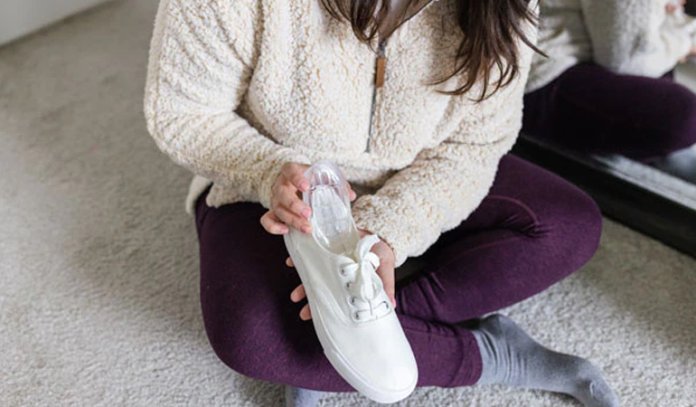Learn useful techniques for handling typical pregnancy challenges that go beyond shoe selection. This extensive article offers helpful tips for expectant mothers on everything from reducing back discomfort and swelling to managing exhaustion and emotional shifts.
Contents
Discover calming methods, dietary changes, workout regimens, and methods for providing emotional support to help you face the difficulties of pregnancy with poise. This resource provides insightful information to help you prioritize your well-being during your pregnancy. Whether you’re looking for suggestions to improve the quality of your sleep or relief from nausea.
Best advice for 2024
It’s important to wear supportive and comfortable shoes throughout pregnancy as your body changes significantly. The greatest shoes for pregnancy can be chosen with the help of these suggestions. You can still choose appropriate shoes in 2024 by using these guidelines:
- Comfort: Look for shoes with ample cushioning and support to alleviate any discomfort caused by swollen feet or arch pain. Ensure they have a roomy toe box to accommodate any swelling.
- Support: Opt for shoes with good arch support to help distribute your weight evenly and reduce strain on your feet and back. Consider shoes with adjustable straps or laces for a customized fit.
- Breathability: Choose shoes made from breathable materials like mesh or leather to keep your feet cool and prevent excess sweating, which can exacerbate swelling and discomfort.
- Low Heel or Flat: Avoid high heels during pregnancy as they can throw off your balance and increase the risk of falls. Instead, opt for low-heeled shoes or flats with a stable sole to provide better stability.
- Room to Grow: Your feet may swell during pregnancy, so choose shoes with a bit of extra room to accommodate any changes in size. Consider buying shoes in a slightly larger size if necessary.
- Easy to Put On: As your pregnancy progresses, bending over to tie shoelaces may become challenging. Look for shoes with slip-on designs or Velcro straps for convenience.
- Try Before You Buy: Visit a shoe store later in the day when your feet are likely to be more swollen to ensure the shoes fit comfortably. Walk around in them to test for comfort and support.
- Consult a Podiatrist: If you have specific foot issues or concerns, consider consulting a podiatrist for personalized advice on the best shoes for your needs during pregnancy.
When selecting shoes for pregnancy, keep in mind that comfort and support should come first. Don’t be afraid to spend money on high-quality shoes that will enable you to move freely and comfortably throughout this unique period.
Does the shoe bend according to the foot?
Yes, a shoe should ideally bend to accommodate your foot’s natural motion. Your foot flexes and bends when you walk; these are the areas closest to your toes and the ball of your foot. A more comfortable and natural walking experience is possible when you wear shoes that flex and bend in unison with the movement of your foot.
You can evaluate this flexibility when trying on shoes by pressing the sole against the ground while holding the shoe firmly at the heel. When you walk, your foot naturally flexes at the ball of the foot, which is where the shoe should bend readily. If the shoe is rigid or difficult to bend in this location, it may limit the range of motion in your foot and cause pain or weariness over extended periods.
It’s crucial to remember that the degree of flexibility varies based on the kind of shoe. For instance, dress shoes or boots may have a stronger sole for more support and structure, but athletic shoes may be more flexible to accommodate dynamic movements. In the end, how flexible the shoes should be will depend on how comfortable you find them and how you want to use them.
Do these shoes have zero drop = zero heel?
The term “zero drop” refers to the difference in height between the heel and the forefoot of a shoe. In shoes with zero drop, the heel and the forefoot are at the same level, resulting in a flat profile. This contrasts with traditional shoes, which typically have a higher heel (positive drop) compared to the forefoot.
Shoes with zero drop are often associated with minimalist footwear or barefoot-style shoes, which aim to mimic the natural movement of walking or running without interference from elevated heels. They are designed to promote a more natural foot strike pattern and may be favored by individuals seeking a more minimalist or barefoot-like experience.
While zero drop shoes typically have a flat profile, it’s not necessarily the case that they have “zero heel” in terms of thickness. Some zero drop shoes may still have a cushioned heel to provide impact absorption and comfort, but the overall height difference between the heel and forefoot is minimal or nonexistent.
If you’re specifically looking for shoes with both zero drop and a zero heel in terms of thickness, you may need to search for options specifically labeled as such or consider minimalist or barefoot-style shoes, which are more likely to meet these criteria.
Are the shoes breathable?
The breathability of shoes depends on the materials used in their construction and the design features incorporated into them. Breathable shoes are typically made from materials that allow air to circulate freely around the foot, helping to regulate temperature and reduce moisture buildup.
Common breathable materials used in shoes include:
- Mesh: Mesh uppers are lightweight and feature tiny perforations that allow air to flow in and out of the shoe, promoting ventilation and breathability.
- Knit: Knit uppers are flexible and breathable, often featuring a more open weave than traditional materials like leather or synthetic overlays.
- Perforated Leather: Some leather shoes feature perforations or cutouts that improve airflow and ventilation without sacrificing durability.
- Textile Blends: Shoes made from a combination of breathable textiles, such as cotton or bamboo blends, may offer enhanced breathability and moisture-wicking properties.
In addition to materials, shoe design can also impact breathability. Features like ventilation channels, breathable linings, and moisture-wicking sock liners can help enhance airflow and keep your feet feeling cool and dry.
When shopping for breathable shoes, look for styles that incorporate these features and prioritize materials known for their breathability. Keep in mind that while breathable shoes can help keep your feet comfortable, they may not be suitable for all environments or weather conditions.
What difficulties can you encounter during pregnancy? And what (besides shoes
During pregnancy, women may encounter a variety of physical and emotional challenges. Here are some common difficulties experienced during pregnancy and suggestions for managing them aside from choosing appropriate shoes:
- Swelling: Swelling, particularly in the feet and ankles, is common during pregnancy due to increased fluid retention and changes in circulation. To help reduce swelling, elevate your legs when possible, avoid standing or sitting for long periods, stay hydrated, and wear compression stockings.
- Back Pain: Pregnancy can cause or exacerbate back pain due to hormonal changes, weight gain, and shifts in posture. Practice good posture, use proper body mechanics when lifting or carrying objects, engage in regular exercise approved by your healthcare provider, and consider prenatal yoga or swimming to strengthen your core muscles and alleviate back discomfort.
- Fatigue: Pregnancy fatigue is common, especially during the first and third trimesters. Prioritize rest, take short naps during the day if needed, stay hydrated, eat a balanced diet rich in nutrients, and delegate tasks when possible to conserve energy.
- Nausea and Morning Sickness: Many women experience nausea and vomiting, particularly during the first trimester. Eat small, frequent meals throughout the day, avoid triggers like strong odors or greasy foods, sip ginger tea or eat ginger candies, and consider acupressure wristbands to alleviate nausea.
- Heartburn and Indigestion: Hormonal changes during pregnancy can relax the muscles of the digestive tract, leading to heartburn and indigestion. Eat smaller meals, avoid spicy or acidic foods, sit upright after eating, and talk to your healthcare provider about safe antacid options.
- Sleep Disturbances: Difficulty sleeping is common during pregnancy due to hormonal fluctuations, physical discomfort, and frequent urination. Establish a relaxing bedtime routine, use supportive pillows to alleviate discomfort, sleep on your side with a pillow between your knees to support your hips, and limit caffeine intake.
- Emotional Changes: Pregnancy hormones can contribute to mood swings, anxiety, and feelings of overwhelm. Practice self-care, talk to supportive friends or family members, consider joining a prenatal support group, and speak with your healthcare provider if you’re experiencing persistent feelings of sadness or anxiety.
- Varicose Veins: Increased pressure on the veins in the legs can lead to varicose veins during pregnancy. Elevate your legs when resting, avoid crossing your legs for long periods, wear compression stockings, engage in regular low-impact exercise, and maintain a healthy weight.
In addition to these suggestions, regular prenatal care, including visits to your healthcare provider, can help monitor your health and address any concerns or complications that arise during pregnancy.


